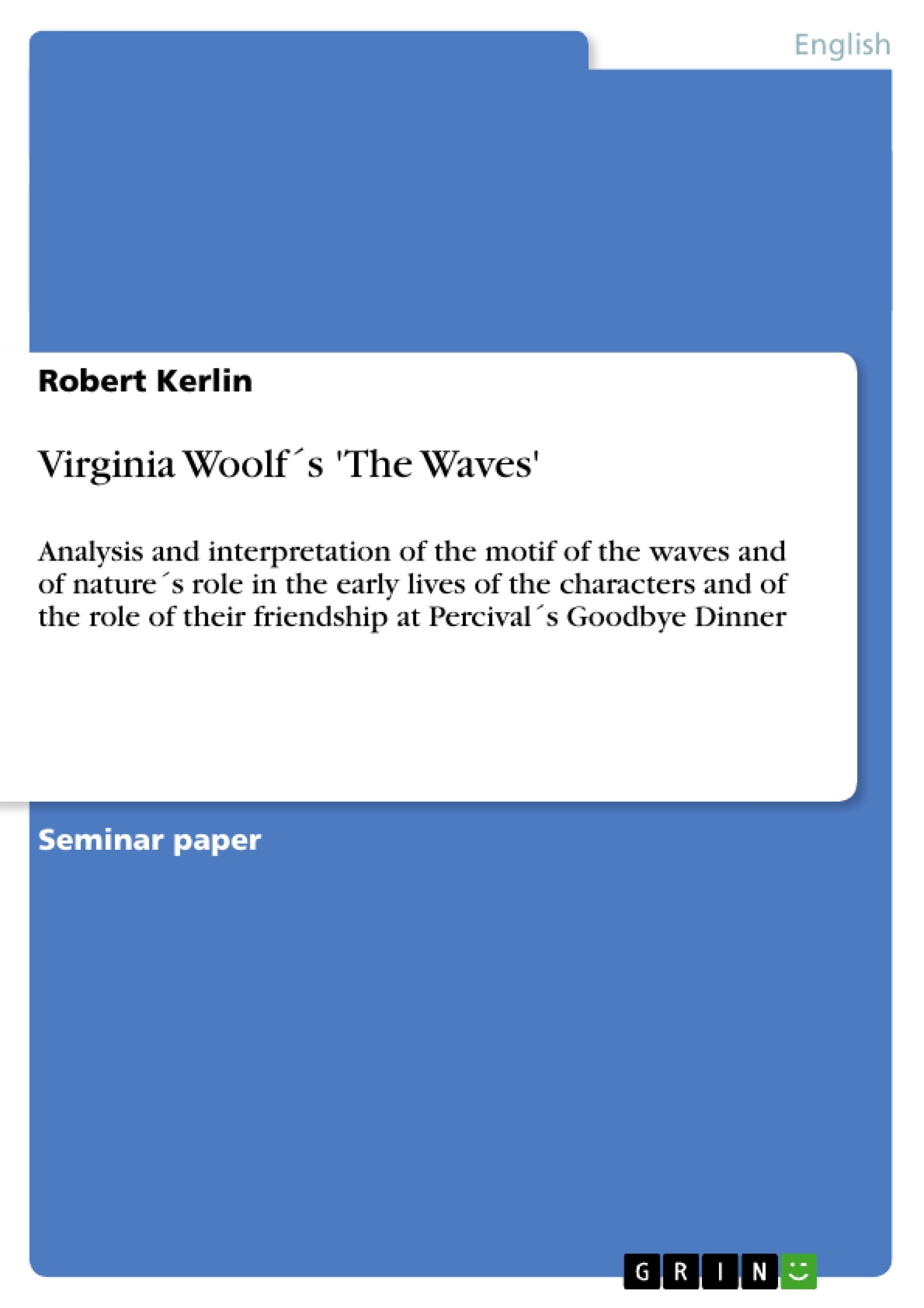Originally, what later became The Waves was called The Moths. Virginia Woolf began writing it on July 2nd 1929 . It underwent drastic changes during the writing and revising processes, that lasted until the year 1931, when it was eventually published by The Hogarth Press- the Woolf´s own publishing house. The Waves certainly and rightfully is regarded as Virginia Woolf´s most abstract and experimental, therefore least accessible novel. The ‘story’ is told through ‘dramatic soliloquies’ spoken by the six characters Rhoda, Jinny, Bernard, Susan, Neville and Louis. There is no real, direct interaction and talks between these characters, but they mean a lot to each other and bond from their common childhood onwards. A seventh character, Percival, is introduced to the reader by the monologues of the six, he never speaks for himself ,though. The whole plot is enclosed in a scene, that can be found daily all around the world: a sunrise over the ocean and the nearby beach, as well as a garden/nature scenery. Each of these interposed chapters symbolizes a stage of life the protagonists are now at and the developments they face.
The main questions I will ask and set out to answer are what the theme of waves and water are supposed to symbolize and what role nature ,ubiquitous in this novel, plays and signifies for the respective characters during their childhood. These questions appear to be central for the understanding of this piece of writing, as they do not occur in any of Woolfe´s other works I have read so far.I will also try to analyze the importance of the friends the characters have made and their feelings during the farewell dinner for Percival.
Firstly, I will give a general overview about the way the novel is conceived. Secondly, I will present the main characters and their general characteristics and then give the plot of the novel.
After that, I will examine the role of the waves and the beach scenery in the novel and what nature means to the individual characters and their lives.
Eventually, the focus will lie on what the reunion on the occasion of Percival´s imminent departure , set years after their last encounter, means to the characters and whether time and distance have alienated them from each other and nature.
I will achieve these goals by the technique of ‘close reading’, ie. the approach to this study will mainly be text-based and contrastive.
Table of Contents
- Introduction
- General Overview of "The Waves"
- Narrative technique
- Characters
- Plot
- Waves and the sea as a motif in The Waves
- Nature and its importance for the individual characters during their childhood
- Group cohesion as portrayed at Percival´s farewell dinner
- Conclusion
Objectives and Key Themes
This analysis aims to explore the symbolic significance of the waves and water motif in Virginia Woolf's "The Waves." The study examines the role of nature in shaping the childhood experiences of the six main characters and investigates how their friendship evolves during a farewell dinner for Percival.
- The symbolic meaning of the waves and water motif in "The Waves."
- The influence of nature on the individual characters' childhoods.
- The development of the characters' friendships during their lives, particularly at Percival's farewell dinner.
- The relationship between the characters and their perception of nature.
- The exploration of the characters' inner lives and the flow of consciousness.
Chapter Summaries
The introductory chapter provides an overview of the novel "The Waves," including information about its genesis and Virginia Woolf's unconventional narrative techniques.
The second chapter delves into the narrative structure of "The Waves," examining the unique combination of interludes and soliloquies used to present the story. The analysis explores the distinct characteristics of these narrative elements, including the use of an omniscient narrator in the interludes and the stream-of-consciousness monologues of the six main characters.
The third chapter focuses on the waves and the sea as recurring motifs in the novel. It examines the symbolic significance of these elements and their relationship to the characters' experiences and emotions.
The fourth chapter analyzes the role of nature in the lives of the individual characters during their childhood. It explores how the natural world shapes their perceptions and influences their development.
The fifth chapter analyzes the dynamics of the group at Percival's farewell dinner, highlighting the importance of their shared experiences and the impact of time and distance on their relationships.
Keywords
Key terms and concepts explored in this analysis include: "The Waves," Virginia Woolf, narrative technique, stream of consciousness, soliloquy, motif, waves, water, nature, childhood, friendship, Percival's farewell dinner, group cohesion, symbolic meaning, close reading.
- Citar trabajo
- Robert Kerlin (Autor), 2007, Virginia Woolf´s 'The Waves', Múnich, GRIN Verlag, https://www.grin.com/document/140820




